Imagine walking into a space that exudes simplicity, comfort, and a connection to nature – that’s the essence of Scandinavian home decor. This style of interior design, rooted in the cultural context of Nordic countries, flawlessly combines minimalistic principles and practicality with the overarching theme of hygge – a Danish term depicting a mood of coziness and contentment. This essay sets out to familiarize you with the fundamentals of Scandinavian design and its signature elements, as well as provide you with practical tips to transform your space into a Scandinavian haven, creating a beautiful marriage between functionality and aesthetically soothing design.
The Fundamentals of Scandinavian Design
Defining Scandinavian Design
Scandinavian design is a design movement characterized by minimalism, simplicity, and functionality that originated in the five Nordic countries of Denmark, Norway, Sweden, Iceland, and Finland in the mid 20th century. It has been defined by a commitment to clean, simple lines, minimalism, and functionality without sacrificing beauty.
Historical and Cultural Influences of Scandinavian Design
The roots of Scandinavian design can be traced back to the early 20th century, when designers in the Nordic region began to emphasize an aesthetic that combined simplicity and functionality. This style was greatly influence by the region’s cold, harsh climates, which necessitated the creation of indoor environments that were warm, cozy, and welcoming. The movement emphasizes a democratic design ideal, meaning that well-designed, beautiful, and functional furniture and products should be accessible to persons of all economic statuses by making a simple yet elegant lifestyle affordable and practical to the middle class.
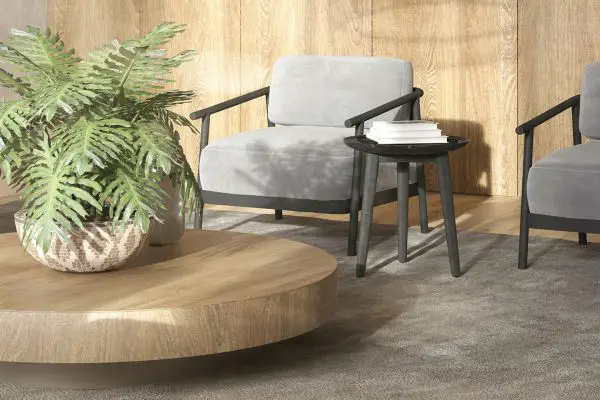
Minimalism and Functionality
The Scandinavian design style is firmly grounded in the concepts of minimalism and functionality. The belief that good design should be available to everyone has contributed to a pared-down aesthetic where every item in a room is carefully considered and must serve a functional purpose. Scandinavian homes are often free from clutter, incorporating storage solutions into the design to maximize space.
Natural, Light Materials
Scandinavian design utilizes natural materials to create a warm, inviting environment. Light wood types such as pine, beech, and ash are common, with the natural imperfections of the wood celebrated to bring an organic, unique touch to each piece. Wool, cotton, linen, and leather are also frequently used, creating a cozy, encapsulating environment.
Importance of Light in Scandinavian Design
Given that Scandinavian countries are dark for much of the year, natural light is an extremely important aspect of Scandinavian interiors. Scandinavian home decor often features large windows that allow for maximum natural light. Light neutral colors dominate, including white, cream, pale blue, and various shades of gray. These colors not only brighten the space, but also create a calming, harmonious effect.

The Role of Nature in Scandinavian Design
Embracing elements of nature is an important principle in Scandinavian design. Beyond the use of natural materials, this also includes plants and using landscaping as a part of the home. Indoor plants are common, providing a touch of color and tying the indoor space into the natural world outside.
Bringing Simplicity to Life
Scandinavian design, rooted in creating functional, simple, and warm spaces, has had a significant influence on the world of interior design for decades. The design aesthetic’s emphasis on amplifying natural lighting, crafting breathable spaces, and incorporating natural materials creates a calming and serene environment, providing a peaceful haven in our busy modern world.

Signature Elements in Scandinavian Home Decor
Simplicity in Home Decor
Recognized for its minimalistic and utilitarian designs, Scandinavian home decor resonates with a perfectly synchronized fusion of simplicity, functionality, and aesthetics. Given Scandinavia’s long, dark winters, home designs often incorporate large windows to let in maximum natural light. The light-filled environment is further enhanced with the application of simple light fixtures, inviting candles, and strategic use of mirrors to maintain a bright and airy atmosphere.
Monochromatic Color Scheme
A defining feature of Scandinavian home decor is its monochromatic color scheme. A largely neutral palette characterizes this style, with shades of cool and warm whites, grays, blacks, and browns being dominant. These serene colors are used to enhance the sense of calm and relaxation, making spaces feel larger and brighter. However, color isn’t entirely absent in Scandinavian design; beyond neutral shades, pops of colors like light blues, pinks, and greens can be seen in accessories or accent furniture to inject character into the room.
Focus on Organic and Natural Materials
Another significant aspect of Scandinavian home decor lies in its focus on organic and natural materials. Nordic countries are rich in natural resources, which plays a large role in defining the Scandinavian aesthetic. Homes often incorporate materials like timber, leather, wool, linen, and fur. Furniture is typically made of light wood, like pine, beech, or ash, and replete with simple, clean lines. This preference for natural, raw materials aligns with the Scandinavian values of sustainability and respect for nature.
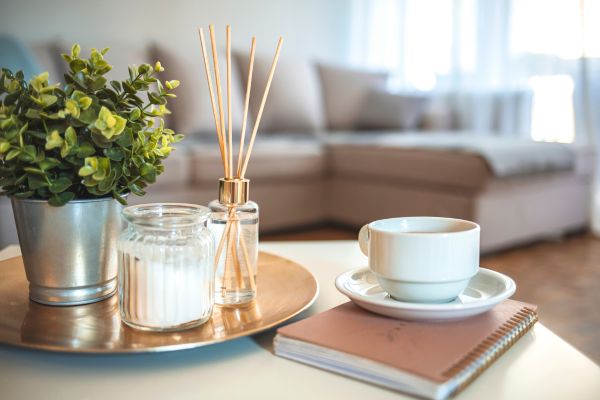
Non-Textile Flooring
Non-textile flooring is another distinctive characteristic. Wooden, or sometimes stone, floors are much more common than carpets in Scandinavian homes. This not only matches with the overall minimalistic design but also adds a warm and rustic touch to the spaces. The wood is often painted white or given a light finish, reinforcing the bright, open feel of the home.
The ‘Hygge’ Factor
Lastly, one of the most recognizable hallmarks of Scandinavian home decor is the ‘hygge’ factor. Hygge, a Danish and Norwegian word for a mood of coziness and comfortable conviviality with feelings of wellness and contentment, is highly valued in Scandinavian design. Clutter is kept to a minimum, and every item in the space has a purpose. This gives Scandinavian homes a highly functional, homely, and inviting feel.
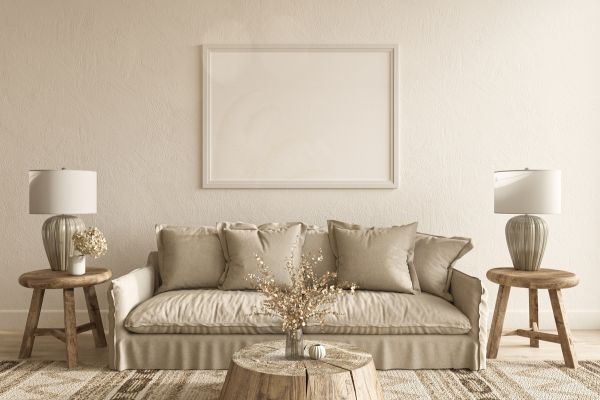
Adding Personal Touches
One of the key traits of Scandinavian home decor, despite appearing to have strict guidelines, is the incorporation of personal elements. Incorporating elements like family photos, pieces of art, or DIY items gives a unique feel and individual character to each space. The fundamental objective of this design style is to promote functionality, tranquility, and good living. Therefore, Scandinavian home decor goes beyond being a mere aesthetic trend; instead, it is more of a lifestyle. This philosophy is witnessed in how all these elements are harmoniously put together to create a space that not only attracts the eye but also reinforces a sense of peace and relaxation, central to the Scandinavian way of life.
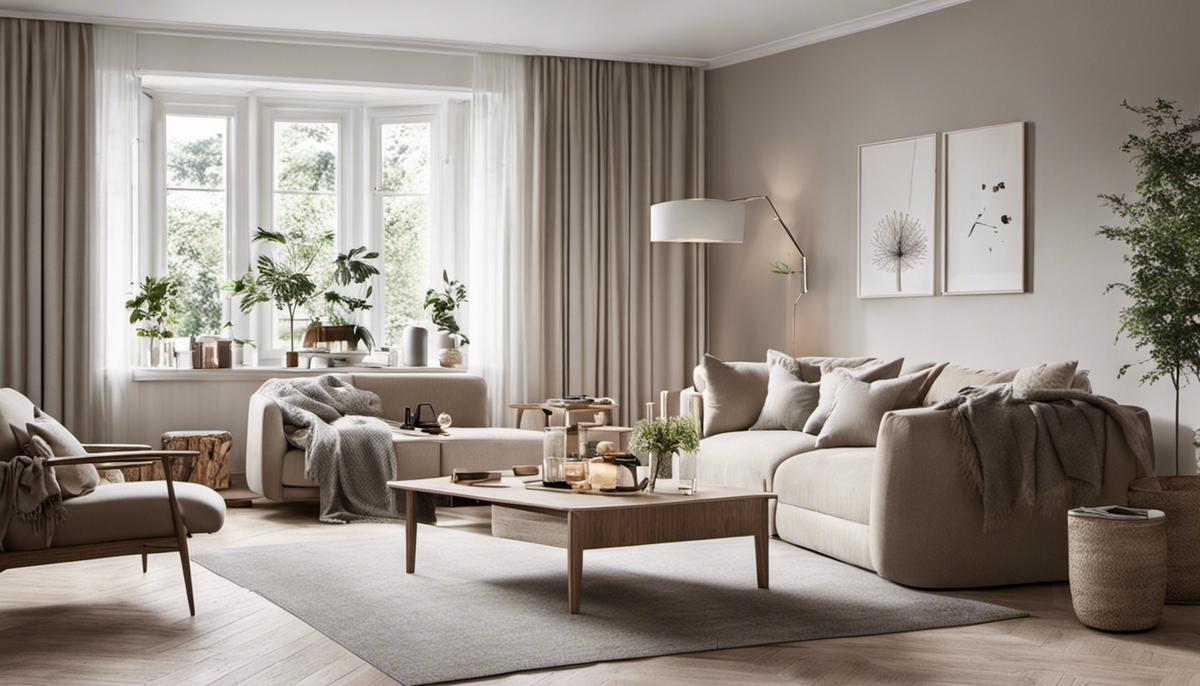
Achieving the Scandinavian Look: Practical Tips and Ideas
Adopting the Scandinavian Style in Your Home Décor
To fully adopt the Scandinavian style in your home, furniture selection cannot be overlooked. Scandinavian furniture design is synonymous with a minimalist aesthetic, coupled with exceptional craftsmanship. Opt for clean-lined, sleek furniture pieces as they often serve as the foundation of any Scandinavian interior. Keep an eye out for furniture pieces that cleverly combine light-colored or natural wood finishes with simple, functional designs to truly appreciate this décor style.
Materials play an essential role
in conveying the Scandinavian feel. So, just beyond the clean lines of the furniture, you should also look for organic materials like wood, wool, felt, and leather. Cozy textiles like sheepskins or fluffy, woolen throws over seating areas and beds add a touch of hygge, a Danish concept that encapsulates the coziness and contentment associated with home.
Next, consider incorporating greenery into your home
The Scandinavian design cherishes a deep connection with nature. Indoor plants lend vibrancy and warm up minimalist interiors while improving the home’s air quality. Choose leafy greens or small flowering plants. You could also incorporate floral patterns, images of landscapes, and animal figures.
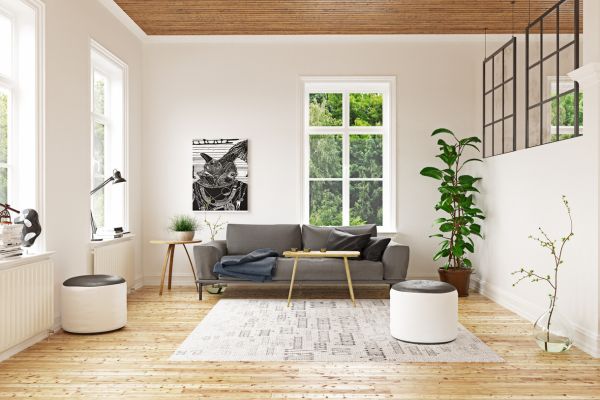
Remember, when it comes to Scandinavian home decor, less is more
This design style is rooted in minimalism. Aim for functional and clutter-free spaces that allow for easy movement and interaction. Simplicity is key, but that doesn’t mean it can’t be warm and inviting.
One of the easy ways to achieve this warmth is to carefully layer several textures
For example, a soft rug under a coffee table, candlesticks of various heights on the mantle, or art that adds visual interest and depth to the wall can create a well-rounded aesthetic.
Natural light is another component that should never be ignored in Scandinavian design
Scandinavian interiors are often light, bright, and airy. Maximize the natural light in your home by keeping window treatments to a minimum. This technique not only brightens up the spaces but also makes them appear larger.
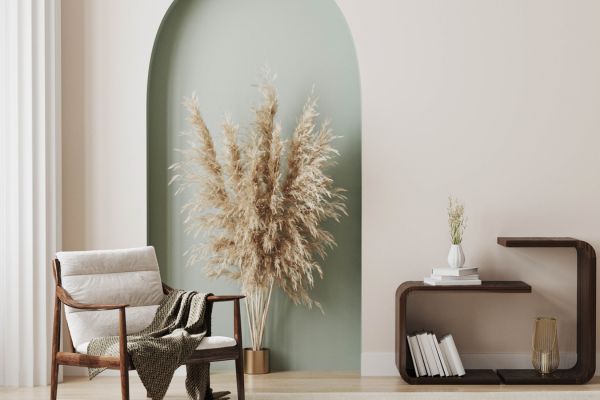
Color also plays a significant role
and the palette tends to stay quite neutral in Scandinavian designs. Whites, grays, blacks, and browns are often interwoven to create a clean and calming look. You can add a pop of color, but it should be used sparingly, perhaps in the form of an accent wall, a single piece of furniture, or a few decorative items.
A final note: the character of Scandinavian design is also defined by its affection for traditional and handmade elements
Integrating hand-knitted throws, vintage or heirloom pieces, pottery, or handicrafts will introduce an element of individuality and personality into your space, resulting in a truly unique Scandinavian home.
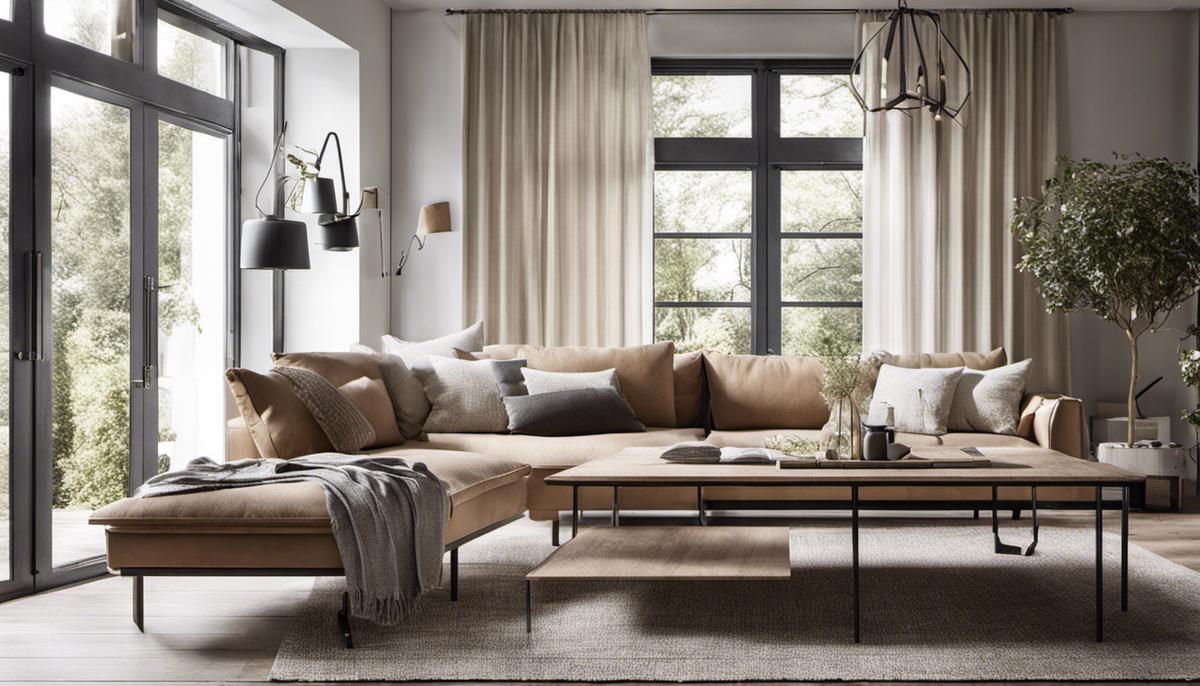
Well-curated Scandinavian décor offers an opportunity to utilize every bit of our living space, balancing visually calming principles with function. It encourages embracing simplicity, amplifying natural beauty, and fostering a soothing and cozy ambiance. Crucially, it is about designing your home in a manner that mirrors your lifestyle and values, promoting sustainability, serenity, and happiness. As we have discovered, crafting a Scandinavian haven is not merely about purchasing a certain type of furniture or paint – it’s about adopting an overall lifestyle and design philosophy that weds beauty and simplicity with everyday practicality. Embrace this design style to transform your living space into a sanctuary that exudes functionality, comfort, and minimalist charm.


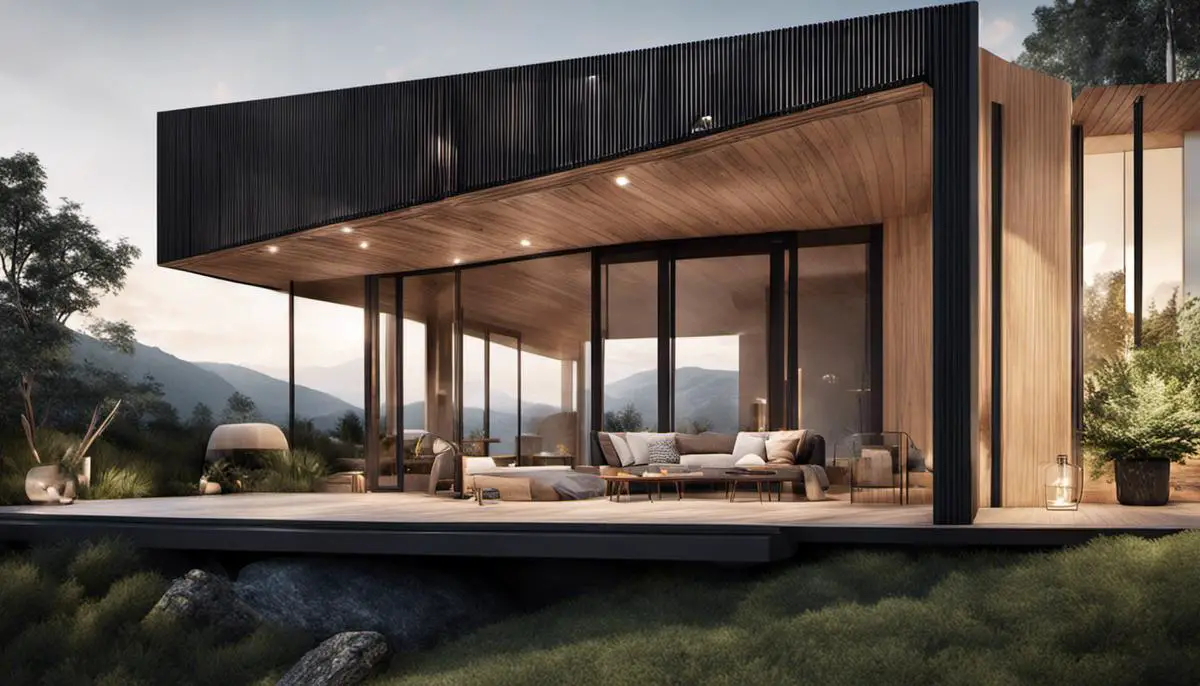
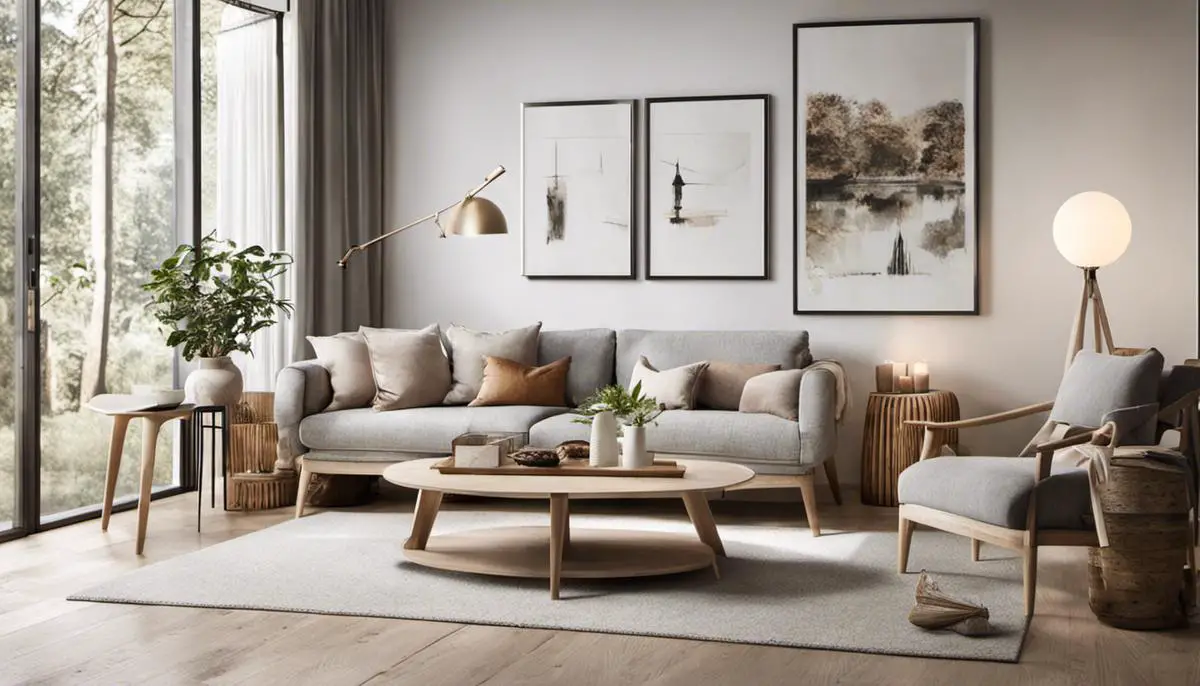


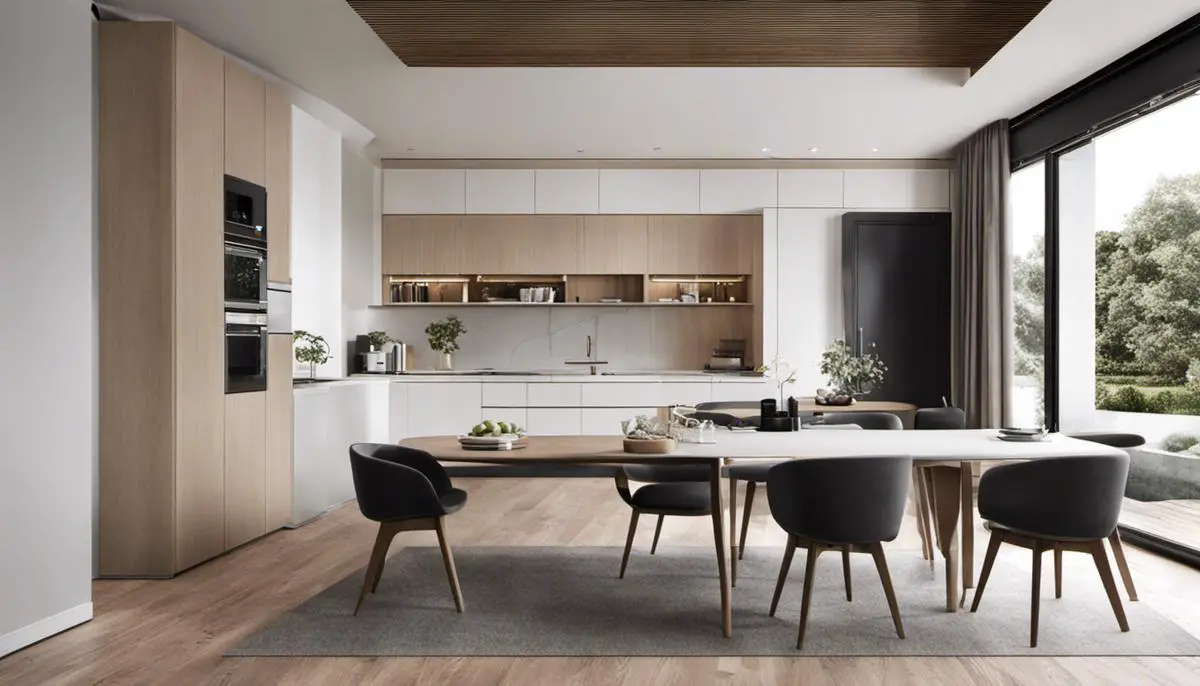

Leave a Reply